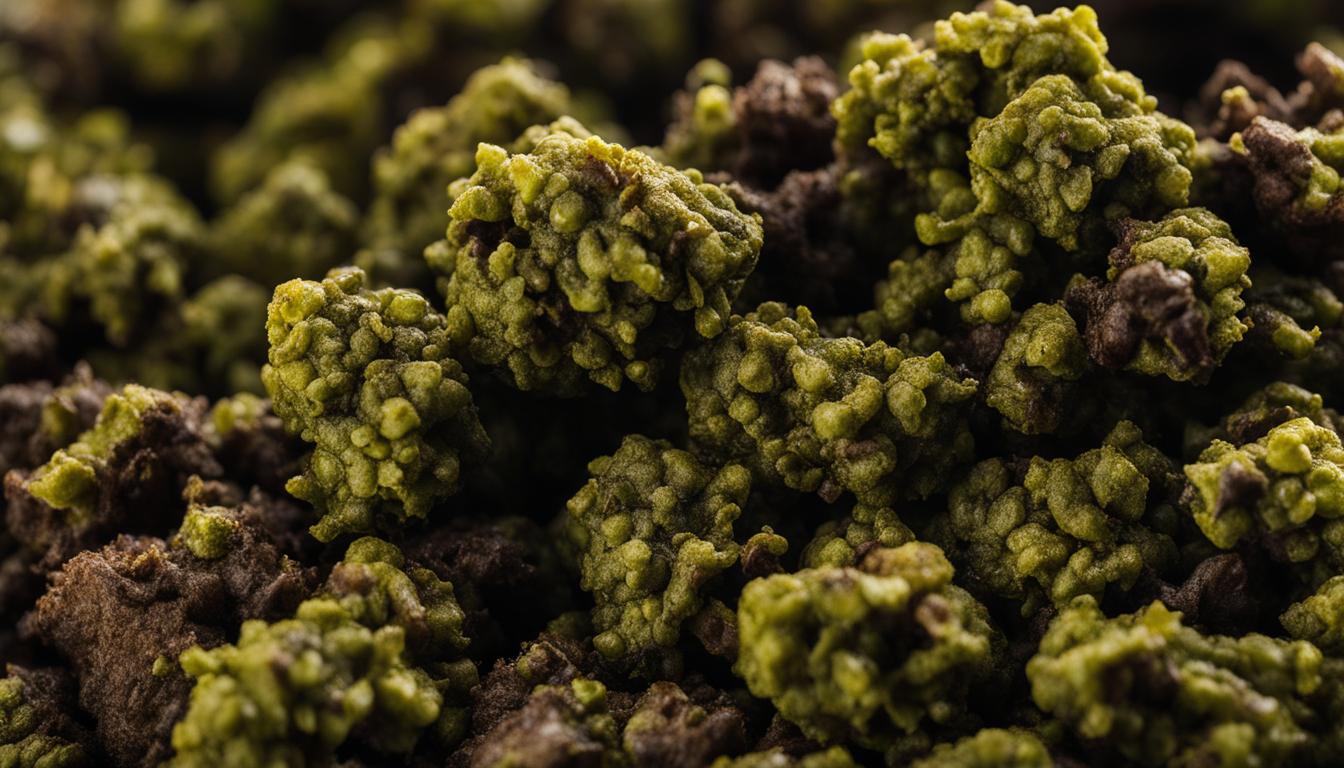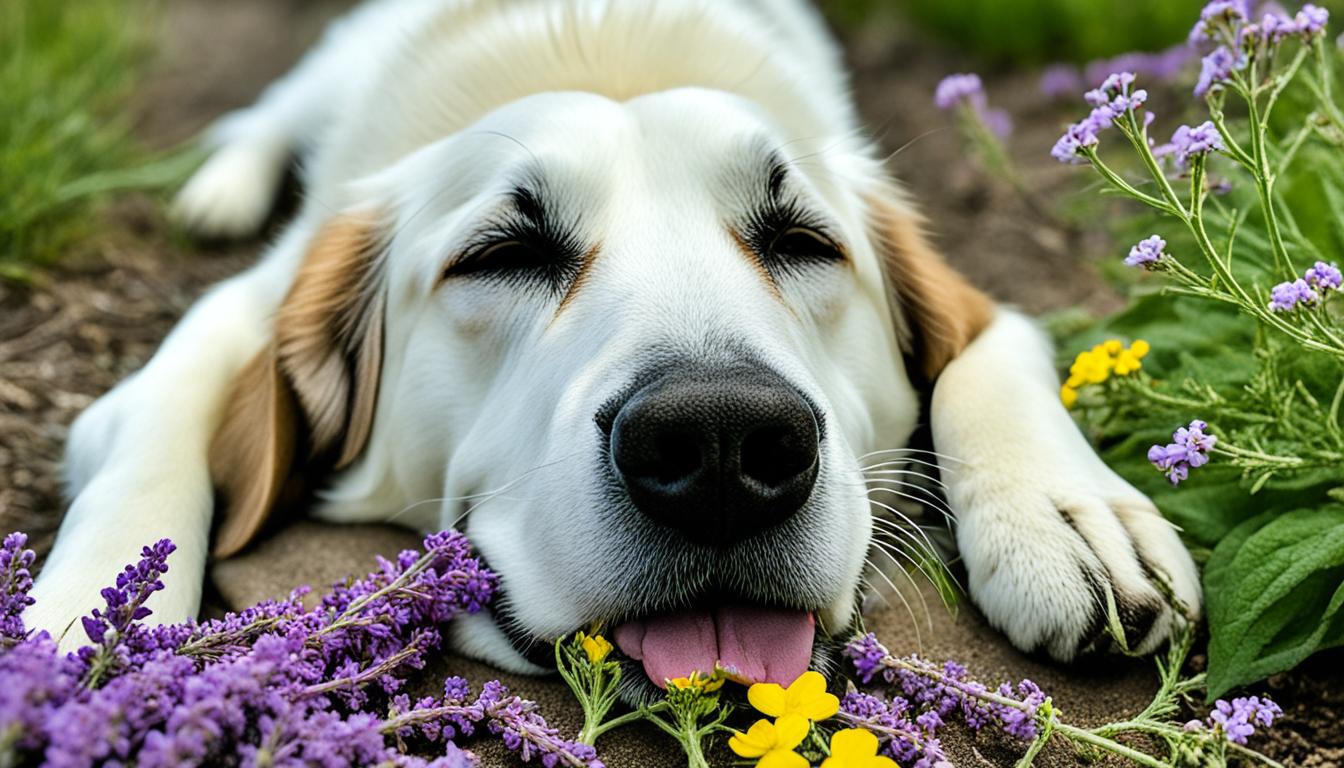Understanding Carbon Monoxide Poisoning
Carbon monoxide (CO) poisoning is a serious health concern for both humans and animals, including cats. This odorless, poisonous gas is produced by the inefficient combustion of carbon fuels and can be found in various sources such as fires, running vehicles, or improperly functioning fuel-burning appliances (PetMD). It is important to understand the basics of carbon monoxide toxicity and the severity of the poisoning to recognize its potential dangers to our feline companions.
Basics of Carbon Monoxide Toxicity
When cats inhale carbon monoxide gas, it binds to the hemoglobin in their blood, preventing the normal transport of oxygen throughout the body. This leads to a condition called hypoxia, where the tissues and organs do not receive an adequate oxygen supply. The severity of carbon monoxide poisoning can vary depending on the concentration of the gas inhaled and the duration of exposure.
Carbon monoxide is highly toxic, even at low concentrations. It is a silent and deadly threat because it is odorless and colorless, making it difficult to detect without specialized equipment. The lack of warning signs makes it crucial for cat owners to be aware of the potential sources of carbon monoxide and take precautions to prevent exposure.
Severity of Carbon Monoxide Poisoning
The severity of carbon monoxide poisoning in cats can range from mild to severe, depending on the level of exposure and the duration of inhalation. Cats affected by carbon monoxide poisoning may exhibit various symptoms, including signs of carbon monoxide poisoning such as weakness, lethargy, difficulty breathing, confusion, and even loss of consciousness. Prompt recognition and immediate action are essential in such cases.
It is important to note that carbon monoxide poisoning can rapidly progress and become life-threatening. Without proper treatment, it can result in tissue damage, organ failure, coma, or even death. If you suspect that your cat has been exposed to carbon monoxide, it is crucial to seek veterinary care immediately.
To diagnose carbon monoxide poisoning in cats, veterinarians may perform various diagnostic procedures, including blood tests to measure the level of carboxyhemoglobin, which is the compound formed when carbon monoxide binds to hemoglobin. Early diagnosis and appropriate treatment are vital for the well-being and recovery of affected cats. For more information on the diagnosis and treatment of carbon monoxide poisoning in cats, refer to our article on carbon monoxide poisoning in cats diagnosis and treatment.
Understanding the basics of carbon monoxide toxicity and the severity of poisoning is crucial for cat owners to recognize the potential dangers and take the necessary steps to safeguard their feline companions. By being proactive in preventing carbon monoxide exposure and seeking immediate veterinary care if exposure occurs, we can help ensure the well-being and safety of our beloved cats.
Causes and Sources of Exposure
Carbon monoxide (CO) poisoning in cats can occur when they are exposed to high levels of this colorless, odorless, and potentially deadly gas. Understanding the common sources of carbon monoxide and the scenarios that can lead to poisoning is crucial in preventing this life-threatening condition.
Common Sources of Carbon Monoxide
Carbon monoxide is produced by burning fuel in various sources such as cars, trucks, engines, stoves, grills, fireplaces, gas ranges, furnaces, and lanterns. Poorly ventilated areas with these sources can lead to carbon monoxide buildup, causing sudden illness and death in both humans and pets (Hill’s Pet Nutrition).
Here are some common sources of carbon monoxide:
| Source | Description |
|---|---|
| Cars and Trucks | Exhaust fumes from vehicles can emit carbon monoxide. Cats left in or near running vehicles are at risk. |
| Home Appliances | Poorly maintained or malfunctioning gas-powered appliances like stoves, grills, fireplaces, and gas ranges can release carbon monoxide into the air. |
| Heating Systems | Furnaces, kerosene or propane heaters, and other carbon-based fuel heating systems can produce carbon monoxide if not properly vented. |
| Generators | Portable generators, often used during power outages, can emit carbon monoxide if operated indoors or in enclosed spaces. |
| Industrial Settings | Cats living near factories or industrial areas may be exposed to carbon monoxide emissions from various processes. |
Scenarios Leading to Poisoning
Cats can be exposed to carbon monoxide in various scenarios, many of which involve confined spaces and inadequate ventilation. Here are some common scenarios that can lead to carbon monoxide poisoning in cats:
- Enclosed Garages: Cats may explore enclosed garages where vehicles are running, increasing their risk of exposure to carbon monoxide.
- Poorly Ventilated Rooms: Cats locked in rooms with gas-powered appliances or heating systems that are not properly ventilated can be exposed to dangerous levels of carbon monoxide.
- Proximity to Exhaust Pipes: Cats near exhaust pipes of vehicles or gas-powered machinery can inhale carbon monoxide fumes.
- Closed Fireplaces: Cats may seek warmth near closed fireplaces, which can result in carbon monoxide buildup if the chimney is blocked or the fireplace is not properly vented.
- Portable Generators: If cats are kept in areas where portable generators are running, they can be exposed to high levels of carbon monoxide.
It’s important for cat owners to be aware of these potential sources and scenarios to ensure the safety and well-being of their feline companions. Regular maintenance of gas-powered appliances, proper ventilation, and the use of carbon monoxide detectors can help prevent carbon monoxide poisoning in cats.
In the next sections, we will explore the symptoms, diagnosis, treatment, prevention measures, and long-term effects of carbon monoxide poisoning in cats to provide a comprehensive understanding of this serious health condition.
Symptoms and Diagnosis
Recognizing carbon monoxide poisoning in cats is crucial for timely intervention and treatment. Understanding the symptoms and utilizing appropriate diagnostic procedures can help in confirming the presence of carbon monoxide poisoning.
Recognizing Carbon Monoxide Poisoning
The symptoms of carbon monoxide poisoning in cats can vary based on the concentration and duration of exposure. Acute exposure may lead to symptoms such as difficulty breathing, vomiting, seizures, and bright red mucous membranes. On the other hand, chronic exposure may result in lethargy, weakness, difficulty walking, and respiratory abnormalities (Hill’s Pet Nutrition). Other signs of carbon monoxide poisoning in cats can include headaches, dizziness, weakness, nausea, confusion, disorientation, retinal hemorrhages, and kidney susceptibility to ischemic injury (NCBI Bookshelf).
It is important for cat owners to be vigilant and look out for these potential symptoms, particularly if there is a suspected source of carbon monoxide in the environment. If you suspect carbon monoxide poisoning in your cat, it is essential to seek immediate veterinary attention.
Diagnostic Procedures for Cats
Diagnosing carbon monoxide poisoning in cats typically involves a combination of clinical evaluation, history assessment, and diagnostic tests. The veterinarian will perform a thorough physical examination, looking for signs of respiratory distress, abnormal breathing patterns, and abnormal mucous membrane color.
To confirm carbon monoxide poisoning, the veterinarian may recommend specific diagnostic procedures such as blood tests, including arterial blood gas analysis, to assess the blood’s oxygen and carbon dioxide levels. These tests help in evaluating the impact of carbon monoxide on the cat’s respiratory system.
Additionally, the veterinarian may use pulse oximetry, which measures the oxygen saturation in the blood, to assess the cat’s respiratory function. Imaging techniques like chest X-rays might also be employed to evaluate the condition of the lungs and other organs.
It’s important to note that diagnosing carbon monoxide poisoning in cats can be challenging, as the symptoms may overlap with other conditions. Therefore, providing the veterinarian with a detailed history of the cat’s environment and potential exposure to carbon monoxide is crucial for accurate diagnosis.
If carbon monoxide poisoning is suspected, prompt veterinary intervention is essential. Treatment options for carbon monoxide poisoning in cats will be discussed in the subsequent section.
By being aware of the symptoms and understanding the diagnostic procedures, cat owners can play a crucial role in identifying and addressing carbon monoxide poisoning in their feline companions. Early recognition and appropriate veterinary care are vital for the well-being and recovery of cats affected by this toxic gas.
Treatment and Management
In cases of carbon monoxide poisoning, immediate actions and prompt veterinary treatment are crucial to ensure the well-being of cats affected by this life-threatening condition. Let’s explore the necessary steps to take and the available veterinary treatment options.
Immediate Actions to Take
If you suspect that your cat has been exposed to excessive amounts of carbon monoxide, it is important to act swiftly. The foremost step is to remove the cat from the source of the carbon monoxide and relocate it to an area with fresh air. This immediate action helps to minimize further exposure and allows the cat to breathe in uncontaminated air.
Once the cat is in a safe environment, it is essential to seek veterinary assistance immediately. Contact your veterinarian or emergency veterinary clinic to inform them about the situation. They will provide guidance and advice on the next steps to take.
Veterinary Treatment Options
When it comes to carbon monoxide poisoning in cats, veterinary treatment is crucial. The primary goal of treatment is to remove carbon monoxide from the cat’s bloodstream and restore normal oxygen levels. One of the most effective treatments is oxygen therapy, as stated by PetMD. By supplying the cat with 100 percent pure oxygen, oxygen therapy helps eliminate carbon monoxide and ensures adequate oxygenation of vital organs.
In some cases, particularly when the carbon monoxide poisoning is severe, hyperbaric oxygen therapy (HBOT) may be recommended. HBOT involves exposing the cat to high-pressure oxygen, which further accelerates the removal of carbon monoxide from the body. According to NCBI Bookshelf, the best outcomes occur when patients receive their first HBOT treatment within 6 hours of the poisoning event. It’s important to note that not all veterinary clinics have hyperbaric oxygen chambers, so availability may vary.
The specific treatment plan for carbon monoxide poisoning in cats will depend on the severity of the poisoning and the cat’s overall condition. Your veterinarian will assess the situation and determine the appropriate course of treatment. They may also provide additional supportive care, such as intravenous fluids and monitoring of vital signs, to ensure the cat’s stability and recovery.
Remember, carbon monoxide poisoning is a serious medical emergency, and professional veterinary help should always be sought immediately. Delaying treatment can have detrimental effects on the cat’s health. If you suspect carbon monoxide poisoning in your cat, don’t hesitate to contact your veterinarian and follow their guidance.
For more information on the signs, symptoms, and diagnosis of carbon monoxide poisoning in cats, refer to our article on carbon monoxide poisoning in cats symptoms and carbon monoxide poisoning in cats diagnosis.
Prevention Measures
Taking preventive measures is crucial to safeguarding against carbon monoxide poisoning in cats. By being aware of the sources of carbon monoxide and implementing safety precautions, pet owners can help minimize the risk to their feline companions.
Safeguarding Against Carbon Monoxide
Carbon monoxide is produced by burning fuel in various sources such as cars, trucks, engines, stoves, grills, fireplaces, gas ranges, furnaces, and lanterns. Poorly ventilated areas with these sources can lead to carbon monoxide buildup, causing sudden illness and death in humans and pets (Hill’s Pet Nutrition).
To safeguard against carbon monoxide poisoning, it is essential to ensure proper ventilation in areas where these fuel-burning sources are present. Here are some preventive measures to consider:
-
Install carbon monoxide detectors: Place carbon monoxide detectors in your home, especially in areas where fuel-burning appliances are located. Regularly test the detectors to ensure they are functioning properly.
-
Regular maintenance: Schedule regular maintenance and inspections for fuel-burning appliances, such as furnaces and fireplaces. This helps identify and address any potential leaks or malfunctions that could lead to carbon monoxide buildup.
-
Proper ventilation: Ensure that areas with fuel-burning appliances are well-ventilated. Keep vents, flues, and chimneys clear of debris to allow for proper air circulation.
-
Avoid indoor use of certain devices: Never use fuel-burning equipment such as generators, grills, or gas-powered tools indoors, as they can produce carbon monoxide.
Safety Tips for Pet Owners
As a responsible pet owner, it’s important to prioritize the safety and well-being of your cat. Here are some additional safety tips to help protect your feline companion from carbon monoxide poisoning:
-
Keep cats away from potential sources: Prevent access to areas where fuel-burning appliances are located, such as utility rooms or garages. Restrict your cat’s access to these areas to minimize the risk of exposure.
-
Be cautious during power outages: During power outages, some individuals may resort to using fuel-burning devices indoors for heat or cooking. It’s crucial to exercise caution and ensure proper ventilation to prevent carbon monoxide buildup.
-
Educate yourself and others: Learn about the signs and symptoms of carbon monoxide poisoning in cats. Educate family members, friends, and neighbors about the dangers of carbon monoxide and the importance of taking preventive measures.
By implementing these prevention measures and following safety guidelines, you can significantly reduce the risk of carbon monoxide poisoning in your cat. However, if you suspect that your cat has been exposed to excessive amounts of carbon monoxide, it’s crucial to seek immediate veterinary attention. For more information on the signs, symptoms, diagnosis, and treatment of carbon monoxide poisoning in cats, refer to our related articles on signs of carbon monoxide poisoning in cats, carbon monoxide poisoning in cats symptoms, carbon monoxide poisoning in cats treatment, and carbon monoxide poisoning in cats diagnosis.
Impact and Recovery
When cats experience carbon monoxide poisoning, the effects can be detrimental to their health. Understanding the long-term impact and recovery process is essential for the well-being of the affected feline.
Long-Term Effects
Carbon monoxide (CO) is an odorless, poisonous gas that affects all species, including cats. It prevents the blood from carrying oxygen through the body, resulting in hypoxia, which can lead to coma or death. The level of toxicity from carbon monoxide is typically moderate to severe, and any amount inhaled can be life-threatening (Wagwalking).
The long-term effects of carbon monoxide poisoning in cats can vary depending on the severity of the exposure and the duration of oxygen deprivation. Cats may experience damage to vital organs, including the heart, lungs, and brain. The extent of organ damage can influence the recovery process and overall prognosis.
It’s crucial to note that the effects of carbon monoxide poisoning may not always be immediately apparent. Some cats may exhibit delayed symptoms, making it important to monitor their health closely even after the initial exposure.
Recovery Process for Affected Cats
Seeking immediate veterinary care is essential when carbon monoxide poisoning is suspected in a cat. The first step in the recovery process is to remove the cat from the source of carbon monoxide exposure. Moving the cat to an open space with fresh air is crucial to prevent further inhalation of the toxic gas.
Once in a safe environment, the veterinarian will assess the cat’s condition and provide appropriate treatment. Oxygen therapy is a critical component of the recovery process. By administering oxygen, the carbon monoxide is gradually removed from the blood, allowing oxygen levels to return to normal (PetMD).
The duration of recovery can vary depending on the severity of the poisoning and the individual cat’s response to treatment. Some cats may require hospitalization until their blood oxygen levels stabilize and organ function improves. During this time, close monitoring and supportive care will be provided to ensure the cat’s well-being.
It’s important to follow all post-treatment instructions provided by the veterinarian. This may include continued monitoring of the cat’s vital signs, follow-up visits, and any necessary medications or dietary adjustments.
While some cats may fully recover from carbon monoxide poisoning, others may experience long-term complications or organ damage. Regular veterinary check-ups and ongoing care are crucial to managing any potential long-term effects and ensuring the cat’s continued well-being.
Prevention is the best approach to avoid the devastating consequences of carbon monoxide poisoning in cats. By implementing safety measures, such as installing carbon monoxide detectors and ensuring proper ventilation in the living environment, pet owners can significantly reduce the risk to their feline companions. For more information on safeguarding against carbon monoxide, refer to our article on safety tips for pet owners.








